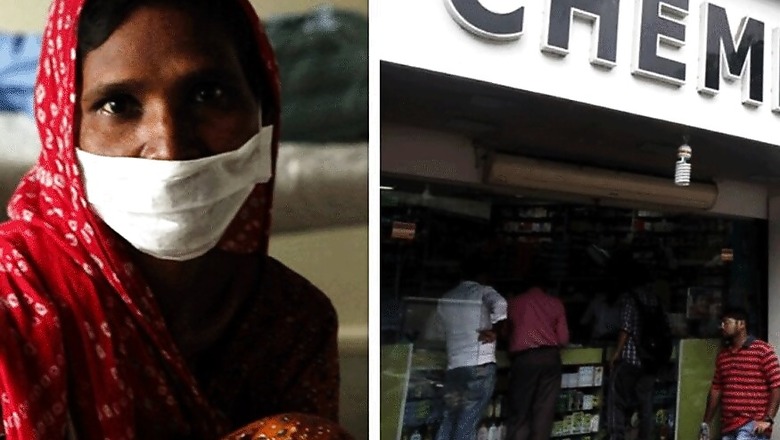
views
New Delhi: If pharmacies in India are trained to recognise the symptoms of tuberculosis (TB) they can help control both the spread of the disease and resistance to first-line antibiotics, says a new paper in the Journal of Clinical Tuberculosis and other Mycobacterial Diseases, published December 8, 2017. Co-authored by Dr. Madhukar Pai, one of the world's leading experts on TB, it examined two recent studies across four Indian cities, that examine the role of pharmacies, often the first point of contact between patients and medical help.
Though urban pharmacists do a poor job of asking enough questions about a patient's symptoms to refer them to doctors, the studies found that no pharmacy sold first line anti-TB medicine without prescriptions, in the 1533 encounters between patients and pharmacists in four cities.
Pharmacies can tilt the management of TB patients for the better or worse through their sheer number -- about 800,000 pan India -- their availability and long open hours and the fact that most medication, including antibiotics, is available over the counter (OTC), noted the paper. However, the authors eschewed personal profit as the reason for pharmacists selling drugs OTC and not referring suspected TB patients to hospitals, pinning this behaviour on poor training instead. The paper said, “pharmacists do deviate from accepted norms when diagnosis is unknown or uncertain. But their behavior improves markedly when diagnoses are more apparent.”
"Pharmacists can be engaged for a variety of TB services across the cascade of care, and private pharmacies have been actively engaged in novel PPM models in India that have dramatically increased private sector TB case notifications in the country and improved quality of TB care in the private sector," it added.
Pharmacies are supposed to serve patients according to guidelines set out by the central government and the Indian Pharmaceutical Association. Referral to a healthcare provider without selling antibiotics or steroids is deemed 'correct' management. The studies found that the standardised patients (SPs) were correctly managed from 13 percent to 62 percent, increasing with the certainty of the TB diagnosis. SPs who came in with non-specific symptoms of cough and fever, consistent with many differential diagnoses, were correctly managed only in 13 percent of the times. However, as the probability of TB increased so did better management. The suggestion of TB, due to close contact with a relative with TB, increased this figure to 45 percent.
Even though Indian pharmacies are known for selling antibiotics OTC, the paper noted "there positive findings". First, antibiotic use more than halved when SPs explained they had been in contact with an infected individual or had a confirmed diagnosis, compared to those only presenting symptoms suggestive of TB. Second, the use of restricted Schedule H1 medicines was low in all cities. Third, out of 1533 SP encounters across 4 cities, not a single pharmacy dispensed first-line anti-TB medications without a prescription.
This crucial engagement of pharmacists in finding and sending TB patients for correct care has only recently started, with memorandums of understanding being signed between the Central TB Division and the Indian Pharmaceutical Association, the All India Organisation of Chemists and Druggists, the Pharmacy Council of India and the SEARPharm forum. This policy shift is important as India's TB numbers dictate the world's TB numbers, which are still worryingly high, as another recent paper, in the medical journal The Lancet found.
The Global Burden of Tuberculosis, based on the Global Burden of Disease Study, 2015, published December 6, 2017, said that cases of TB in parts of Asia, eastern Europe, sub-Saharan Africa had a higher than expected TB burden (in HIV negative people) given their socio-demographic index, and these countries needed to investigate why. The study broke down some of the key factors leading to deaths of HIV negative TB patients. Alcohol was found finance 11.4 percent of deaths, diabetes 10.4 percent and smoking 7.8 percent. The prevalence of all three in India is known to be high. Perhaps that's why the incidence of TB cases was higher than expected (more than 210/10000 population) in India, along with Indonesia, the Philippines, and 14 sub-Saharan African countries.
In 2015, said the study, globally there were 10.2 million incident cases of TB (i.e. newly diagnosed cases), 10.1 million prevalent cases (i.e. cases where the disease and/or the diagnosis existed before the study) and 1.3 million deaths. Of these 8.8 million incident cases, 8.9 million prevalent cases and 1.1 million deaths were in HIV negative patients.

















Comments
0 comment